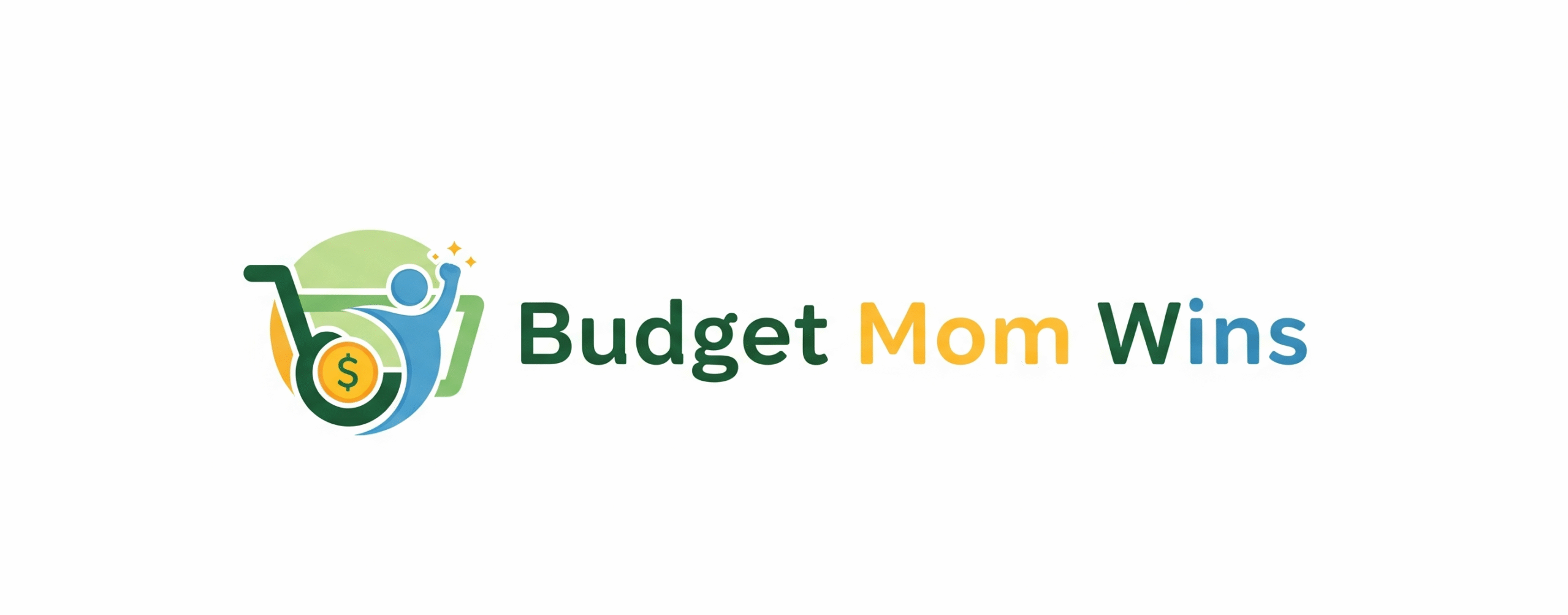How to Save $1000 Fast Emergency Fund for Desperate Families (Proven Method) is not just a guide; it’s a lifeline for families facing financial uncertainty. In today’s unpredictable world, having a robust emergency fund can be the difference between stress and stability. This comprehensive approach demystifies the process of saving quickly, provides actionable strategies, and highlights the importance of a financial safety net.
Understanding what an emergency fund is and its pivotal role in navigating unexpected financial crises is essential for every family. From job loss to medical emergencies, this guide will equip families with the knowledge and tools to build a solid financial foundation. With the right mindset and strategies, saving $1000 can be both achievable and empowering.
Understanding Emergency Funds
An emergency fund is a financial safety net designed to cover unexpected expenses that can arise in daily life. For families in financial distress, having an emergency fund is crucial, as it can prevent them from falling deeper into debt during challenging times. This fund serves as a buffer against unforeseen circumstances, providing peace of mind and the ability to respond swiftly to emergencies.The importance of an emergency fund cannot be overstated, as it offers families the security to handle life’s unpredictabilities.
It acts as a financial cushion that allows individuals to avoid high-interest debt or reliance on credit cards when emergencies arise. Building an emergency fund is a strategic move that prepares families for unexpected financial burdens, ensuring that they can maintain stability during difficult periods.
Situations Requiring an Emergency Fund
There are various situations where an emergency fund can be vital for families. Understanding these scenarios highlights the necessity of having immediate access to financial resources. Below are examples where an emergency fund proves its worth:
- Medical Emergencies: Unexpected health issues often lead to significant medical bills. An emergency fund allows families to cover these expenses without incurring debt.
- Job Loss: Losing a job can lead to financial strain. An emergency fund can help cover living expenses while searching for new employment.
- Major Home Repairs: Sudden issues, such as a leaking roof or broken heating system, require immediate attention. Having funds available ensures that families can make necessary repairs promptly.
- Car Troubles: Vehicle breakdowns can be both inconvenient and costly. Access to an emergency fund allows families to manage repair costs without disrupting their daily lives.
- Natural Disasters: Events like floods, hurricanes, or fires can lead to unforeseen expenses. An emergency fund can aid families in recovery and rebuilding processes.
“Having an emergency fund is not just about saving; it’s about safeguarding your family’s financial future.”
Date nights can feel impossible on a tight budget, but they don’t have to be boring. In my guide, I share Free Date Night Ideas for Broke Married Couples That Actually Feel Special , perfect for rekindling romance without breaking the bank. Simple ideas can create special moments and strengthen your relationship.
Establishing an emergency fund equips families with the resources needed to navigate through life’s unexpected challenges effectively. It reinforces financial resilience and promotes long-term stability, allowing families to move forward with confidence in uncertain times.
Assessing Your Current Financial Situation
Understanding your current financial situation is the first step towards building a robust emergency fund. By thoroughly analyzing your income and expenses, you can identify areas where you might be overspending and discover opportunities to save money. This analysis serves as the foundation for making informed financial decisions and setting realistic savings goals.
To effectively analyze your financial situation, start by gathering all relevant financial documents. This includes pay stubs, bank statements, and bills. Next, create a comprehensive list of your monthly income sources and expenses. It’s crucial to differentiate between fixed and variable expenses, as this distinction will help you understand where you can cut back.
Identifying Income and Expenses
A clear picture of your income and expenses allows you to pinpoint where adjustments can be made. Begin by listing all your income sources, including salaries, bonuses, freelance work, and any side gigs. Following that, categorize your expenses into fixed and variable categories.
- Fixed Expenses: These are regular, unchanging costs that you must pay each month, such as:
- Rent or mortgage payments
- Insurance premiums
- Utility bills (e.g., water, electricity, gas)
- Loan payments (e.g., student loans, car loans)
- Variable Expenses: These costs can fluctuate month to month and include:
- Groceries
- Dining out
- Entertainment
- Clothing and personal care items
- Transportation costs (e.g., fuel, public transport)
The identification of these expenses will help you recognize where you have flexibility in your budget. This process is essential for establishing your saving strategy.
Creating a Comprehensive Expense Table
A well-organized table can provide clarity on your financial landscape. Below is a sample table to help categorize your fixed and variable expenses:
| Expense Type | Description | Amount ($) |
|---|---|---|
| Fixed Expenses | Rent/Mortgage | 1200 |
| Fixed Expenses | Insurance | 300 |
| Variable Expenses | Groceries | 400 |
| Variable Expenses | Dining Out | 200 |
| Variable Expenses | Entertainment | 150 |
Utilizing this table format can help you visualize your financial obligations more clearly, making it easier to identify potential areas for cost-cutting. By systematically assessing your current financial situation, you lay the groundwork for effective savings strategies, ultimately working toward that vital $1000 emergency fund.
Setting a Savings Goal
Determining a realistic savings goal is crucial for families facing financial uncertainty. It is essential to align this goal with the specific needs of the family while ensuring that it remains achievable within a designated timeline. A clear focus on a target, such as saving $1000 for an emergency fund, can provide a sense of direction and motivation.Aiming for $1000 as a quick target for an emergency fund is significant for families.
This amount serves as a foundational safety net that can cover unexpected expenses that may arise, such as medical emergencies or urgent home repairs. Establishing this target simplifies the savings process and encourages consistent commitment towards achieving financial stability.
Transitioning to a stay-at-home mom after losing my second income was challenging yet transformative. It pushed me to explore creative ways to manage our finances, documented in my piece on How I Became Stay at Home Mom After Losing Second Income (Honest Money Guide). This journey has taught me valuable lessons about budgeting and resourcefulness.
Creating a Savings Milestone Plan
To effectively reach the $1000 savings goal, it is beneficial to break down the target into manageable milestones. This approach not only makes the goal more approachable but also provides opportunities to celebrate progress. Below is a sample plan illustrating how to save $1000 over 10 weeks, which equates to a savings rate of $100 per week.
- Week 1: Save $100
-Cut down on dining out or entertainment expenses to kickstart the savings journey. - Week 2: Save $200
-Utilize any extra cash from freelance work or selling unused items around the house. - Week 3: Save $300
-Implement a no-spend week where only essentials are purchased, funneling all savings into the emergency fund. - Week 4: Save $400
-Review monthly subscriptions and cancel those that are non-essential. - Week 5: Save $500
-Reevaluate the family budget to identify any additional areas to cut back, such as groceries or utilities. - Week 6: Save $600
-Consider a temporary side job or gig to generate extra income. - Week 7: Save $700
-Reassess and reallocate funds from tax refunds or bonuses received during this period. - Week 8: Save $800
-Continue to adjust spending habits, finding new ways to save on regular purchases. - Week 9: Save $900
-Encourage family members to contribute to the emergency fund by giving up a luxury or two. - Week 10: Save $1000
-Celebrate reaching your goal and consider how to maintain or expand your emergency fund moving forward.
Setting achievable milestones creates a clear pathway toward financial resilience. Each step towards the $1000 target is a building block for lasting confidence and stability, reinforcing the importance of emergency savings in safeguarding a family’s financial future.
Proven Methods to Save Quickly
To build an emergency fund quickly, families need to adopt efficient strategies that do not compromise essential needs. By implementing cost-cutting measures and supplementing income, saving can become a more achievable goal. This section Artikels actionable methods that can help families maximize their savings potential in a short timeframe.
As a single parent, managing meals on a budget is crucial. My Ultimate Budget Meal Plan for Single Parents With 3 Kids Under $80 per Week is designed to help those juggling multiple responsibilities while saving money. It focuses on nutritious meals that are easy to prepare and budget-friendly.
Strategies to Cut Costs Efficiently
Reducing expenses is a crucial step toward increasing your savings. Below are effective strategies that can help families lower their monthly expenditures while still maintaining necessary living standards.
- Grocery Shopping Adjustments: Use meal planning to optimize grocery lists and minimize waste. Buying in bulk can also reduce costs on frequently used items.
- Utility Savings: Implement energy-saving measures, such as using LED bulbs, unplugging devices when not in use, and responsibly managing heating and cooling settings.
- Subscription Services Review: Evaluate all subscription services and cancel those that are no longer beneficial or necessary. Consider sharing subscriptions with family members or friends.
- Transportation Alternatives: Use public transportation, carpool, or bike instead of driving to reduce fuel and maintenance costs.
- Entertainment Budgeting: Look for free local events, utilize library services for books and movies, and take advantage of community resources to stay entertained without overspending.
Side Hustles to Generate Extra Income
Engaging in side hustles can provide additional income to bolster your emergency fund. The following list includes various opportunities that families can pursue to generate extra cash quickly.
- Freelancing: Utilize skills in writing, graphic design, or programming on platforms like Upwork or Fiverr to earn extra income.
- Online Tutoring: Offer tutoring services in subjects you excel at through online platforms such as Tutor.com or VIPKid.
- Pet Sitting or Dog Walking: Use apps like Rover to connect with pet owners in need of services, which can be a fun and rewarding avenue for extra income.
- Selling Unused Items: Decluttering by selling unwanted items on eBay, Craigslist, or Facebook Marketplace can provide quick cash and help clear out your home.
- Delivery Services: Consider working with companies like UberEats or DoorDash, which offer flexibility and allow you to earn money on your own schedule.
Effectiveness of Budgeting Apps and Tools
Utilizing budgeting apps can significantly streamline the process of tracking and managing savings. These tools offer insights into spending habits and help set realistic saving goals.
- Real-Time Tracking: Apps like Mint and YNAB provide real-time updates on your finances, giving you immediate visibility into your spending versus saving.
- Goal Setting Features: Budgeting apps allow users to set specific savings goals and track their progress, making it easier to stay motivated and accountable.
- Expense Categorization: By categorizing expenses, users can identify areas where they can cut costs and redirect those funds toward their emergency savings.
- Automated Savings: Some apps offer features that automatically save small amounts of money based on user-defined rules, making saving more effortless.
- Budget Alerts: Notifications regarding overspending in certain categories can help users adjust their habits in real-time and reinforce good financial practices.
Leveraging Community Resources
In times of financial emergencies, tapping into community resources can provide essential support for families in need. Many local programs and organizations exist to assist with various challenges, including food insecurity, housing instability, and financial counseling. By understanding and utilizing these resources, families can alleviate some of their immediate financial burdens and set a foundation for long-term stability.
Community resources are often underutilized, yet they can offer significant aid during tough times. Programs may include grants, food banks, and financial counseling services. Below are key resources available to families facing financial emergencies:
Local Financial Assistance Programs
Various programs are designed to support families in financial distress. These may include:
- Community Grants: Many local governments and non-profits offer grants to assist families with urgent needs such as paying bills or covering essential expenses. These grants often require a straightforward application process and provide funds that do not need to be repaid.
- Food Banks: Local food banks supply nutritious food to families struggling to afford groceries. These organizations often operate through partnerships with grocery stores and community donations, making food accessible to those in need.
- Rental Assistance Programs: Non-profit organizations often provide rental assistance to prevent evictions. These programs can cover overdue rent or help families secure stable housing.
- Utility Assistance Programs: Many local utility companies offer programs that assist low-income families in paying their utility bills or provide temporary relief during financial hardships.
- Healthcare Assistance: Some community health organizations provide free or sliding-scale healthcare services, ensuring families can receive necessary medical attention without financial strain.
Connecting with these resources often involves visiting local community centers, searching online directories, or contacting local government offices for assistance. Engaging with these organizations can provide immediate relief while also helping families build a more secure financial future.
Connecting with Financial Advisors and Non-Profits
Establishing a relationship with local financial advisors and non-profit organizations can offer tailored assistance to families navigating financial emergencies. These professionals and organizations can provide valuable insights into budgeting, debt management, and saving strategies.
- Financial Advisors: Many financial advisors offer free consultations to help families understand their financial situation. Advisors can provide personalized strategies to optimize spending and savings.
- Non-Profit Organizations: Numerous non-profits focus on financial literacy and budgeting assistance. They often host workshops and one-on-one counseling sessions that equip families with the tools they need to manage their finances better.
- Community Outreach Programs: Local outreach programs often offer seminars and resources aimed at helping families improve their financial literacy and gain access to community services.
Leveraging these community resources not only aids in immediate financial recovery but also empowers families with knowledge and support for future stability. By actively seeking help, families can navigate their financial challenges more effectively while fostering a sense of community connection and resilience.
Maintaining Your Emergency Fund
Establishing an emergency fund is only the first step in financial preparedness. Maintaining the integrity of this fund is vital for ensuring it serves its purpose when needed. This section discusses effective strategies to keep your emergency fund intact, replenish it after usage, and adjust it as your financial situation evolves.
Keeping the Emergency Fund Intact
Once your emergency fund is established, it is crucial to protect it from unnecessary withdrawals. This requires discipline and a clear understanding of what constitutes an emergency. Emergencies typically include unexpected medical expenses, home repairs, or job loss. To keep your fund intact, consider the following strategies:
- Set clear definitions for what qualifies as an emergency, and avoid dipping into the fund for non-urgent expenses.
- Store your emergency fund in a separate savings account that is not easily accessible for regular spending, minimizing the temptation to use it.
- Regularly review your fund to ensure it meets your needs, and adjust your savings strategy accordingly if your financial situation changes.
Replenishing the Fund After Use, How to Save 00 Fast Emergency Fund for Desperate Families (Proven Method)
Using your emergency fund can be a necessity during financial crises, but it’s essential to replenish it afterward. Here are effective practices for rebuilding your fund:
- Prioritize contributions to your emergency fund in your monthly budget after an unexpected withdrawal. Treat it as a non-negotiable expense to restore it quickly.
- If your budget is tight, look for areas where you can cut discretionary spending temporarily to redirect those funds back into your emergency savings.
- Consider setting up automatic transfers from your checking account to your emergency fund, ensuring your savings replenish consistently without needing conscious effort.
Reviewing and Adjusting the Fund
Financial situations can change due to various factors such as income fluctuations, family size, or unexpected expenses. Regular reviews of your emergency fund ensure it remains sufficient. Best practices for evaluating your fund include:
- Assess your monthly expenses and potential emergencies to determine if your current savings target is adequate. As expenses rise, so should the fund.
- Consider external economic factors, such as inflation or changes in your job market, that could affect your financial stability and adjust your fund accordingly.
- Set a schedule for regular reviews, such as quarterly or bi-annually, to ensure you consistently evaluate your emergency fund’s adequacy and adjust your savings strategy.
“An emergency fund is not just a safety net; it’s peace of mind in uncertain times.”
Encouraging Family Involvement
Involving the entire family in the saving process can significantly enhance not only the amount saved but also the collective understanding of financial management. Engaging family members in budgeting and saving discussions fosters a sense of ownership and responsibility, making the goal of saving $1000 more achievable. By working together, families can create a supportive environment that encourages smart financial habits.To effectively include everyone in the savings journey, it’s essential to create activities that promote financial literacy among family members of all ages.
After the kids are tucked in, trying to maintain a romantic spark can be challenging. I’ve curated a list of 12 Romantic Date Night Ideas at Home for Married Couples After Kids Bedtime (Under $10) that are budget-friendly and fun. These simple activities can help keep the connection strong without the hassle of a night out.
This involvement can take various forms, from educational games to collaborative projects that highlight the importance of saving. Additionally, establishing a fun savings challenge can motivate the family to contribute together, making the experience enjoyable and rewarding.
Activities for Family Financial Literacy
Engaging family members in activities that boost their financial awareness is crucial for long-term financial stability. Here are some effective ways to promote financial literacy within the family:
- Family Savings Meetings: Schedule regular meetings where everyone discusses their saving goals, progress, and strategies. This encourages open communication and accountability.
- Budgeting Board Game: Create a board game that simulates financial decisions. This hands-on approach can teach valuable lessons about budgeting, saving, and prioritizing expenses.
- Financial Literacy Workshops: Attend local workshops or webinars as a family. Many communities offer free sessions on budgeting, saving, and investing tailored for families.
- Reading Together: Share books or articles about finance and saving. Discuss the key takeaways as a family to enhance understanding and encourage critical thinking.
Fun Savings Challenge Ideas
Creating a savings challenge can invigorate the family’s commitment to saving. Here are some engaging challenge ideas that can motivate everyone to participate:
- 30-Day Savings Challenge: Set a daily savings goal that increases incrementally over 30 days. For example, start with saving $1 on day one, $2 on day two, and so on, culminating in $465 by the end of the month.
- Family Coin Jar: Designate a jar for spare change. Encourage everyone to contribute their coins and see how quickly you can fill the jar to reach a predetermined savings goal.
- No-Spend Week Challenge: Challenge the family to go a week without spending on non-essential items. The money saved during this period can be directly added to the emergency fund.
- Reward Milestones: Set specific savings milestones and reward the family with a fun outing or a special treat when each goal is achieved. This can foster a sense of accomplishment and teamwork.
By incorporating these activities and challenges into your family’s routine, you create a dynamic and engaging atmosphere around saving. This collective effort not only builds an emergency fund more effectively but also instills lifelong financial skills in every family member.
Overcoming Emotional Barriers to Saving
Families often encounter emotional and psychological hurdles that can impede their ability to save money effectively. These barriers stem from a variety of sources, including stress, societal pressures, and a negative mindset towards financial stability. Recognizing and addressing these mental blocks is crucial in establishing a sustainable saving practice, especially when aiming to build an emergency fund. Developing a positive mindset around saving is not only beneficial but essential for long-term financial health.
By understanding the emotional aspects of saving, families can learn to navigate their feelings and make better financial decisions.
I experienced a remarkable change when I reduced my grocery spending to $100 weekly for my family of five. The strategies I implemented are detailed in my article, Before and After My Grocery Spending Dropped to $100 Weekly for Family of 5. This journey not only saved money but also encouraged healthier eating habits for my family.
Common Emotional Blocks to Saving
Several mental barriers can obstruct the saving process. Identifying these blocks can help families combat them more effectively. Here are some common emotional hurdles:
- Fear of Scarcity: Many families believe that saving money means depriving themselves. This mentality can lead to overspending and a lack of motivation to save.
- Guilt and Shame: Past financial mistakes can create feelings of guilt. Families may feel ashamed for not having saved before, which can lead to avoidance of financial planning altogether.
- Instant Gratification: The desire for immediate rewards often overshadows the long-term benefits of saving. This leads to prioritizing short-term pleasures over future security.
- Overwhelm: The sheer amount of financial information available can be daunting. Families often feel lost in the sea of advice and strategies, leading to paralysis by analysis.
Strategies for Building a Positive Mindset Towards Saving
Building a positive mindset about saving requires intentional effort and practice. Here are effective strategies to foster a healthier view of saving money:
- Set Achievable Goals: Start with small, realistic saving goals. Achieving these can instill a sense of accomplishment and motivate families to aim higher.
- Visualize Success: Create a vision board that represents financial goals, such as a new home, a family vacation, or educational funds for children. This visualization can reinforce the importance of saving.
- Practice Gratitude: Regularly reflecting on what you are grateful for can shift focus from what you lack to what you already have, making the saving process feel less burdensome.
- Celebrate Milestones: Acknowledge and reward progress, no matter how small. Celebrating when reaching savings milestones reinforces positive behavior.
Inspirational Quotes for Financial Perseverance
Motivation can sometimes be found in the words of others. Here are some quotes that have inspired many on their financial journeys:
“Do not save what is left after spending, but spend what is left after saving.”
Warren Buffett
“A penny saved is a penny earned.”
Benjamin Franklin
“The best time to start saving was yesterday. The second best time is now.” – Unknown
These insights can help families overcome the emotional barriers associated with saving, encouraging a more proactive approach to building an emergency fund and achieving financial stability.
Last Word
In conclusion, establishing a fast emergency fund of $1000 is not just about saving money; it’s about regaining control over your family’s financial future. By understanding your financial situation, setting clear goals, and utilizing community resources, families can create a safety net that brings peace of mind. Remember, every small step toward saving counts, and involving the whole family can turn this challenge into a shared journey of financial literacy and resilience.
Essential FAQs: How To Save 00 Fast Emergency Fund For Desperate Families (Proven Method)
What is an emergency fund?
An emergency fund is a savings account designated for unexpected expenses or financial emergencies, providing a financial safety net.
How quickly can I save $1000?
The timeline to save $1000 depends on your income and expenses, but with a structured plan and commitment, it’s possible to achieve this goal in a few months.
What if I have existing debts?
It’s crucial to prioritize both debt repayment and savings; consider a balanced approach that allows for debt management while building your emergency fund.
Can community resources really help?
Yes, local programs, food banks, and financial advisors can provide essential support and resources to help families in need during emergencies.
How can I keep my emergency fund intact?
Avoid using your emergency fund for non-emergencies, and regularly review your financial situation to replenish it when needed.








Leave a Comment